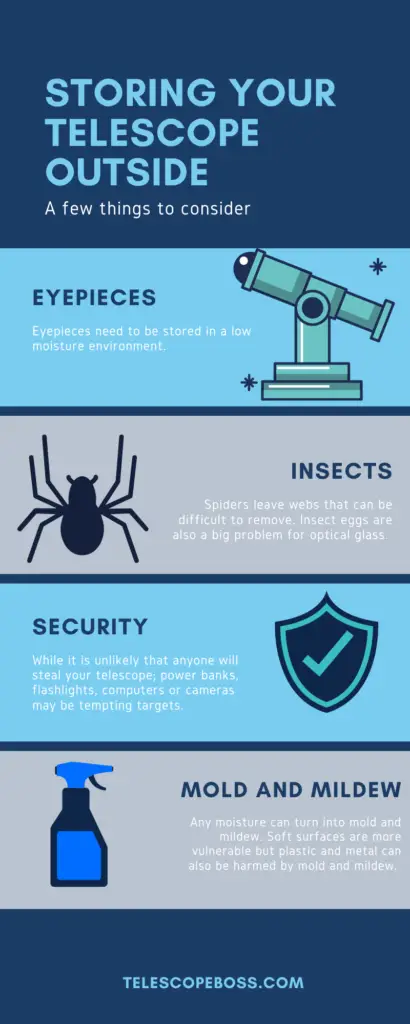
Dobsonian telescopes are really big. They are great for beginners, they are affordable and easy to learn, but storage can be tricky. Store your Dobsonian telescope in a weatherproof location inside or outside of your house. Telescopes need to be kept away from dust, dirt and moisture, but temperature fluctuations are not as big of…